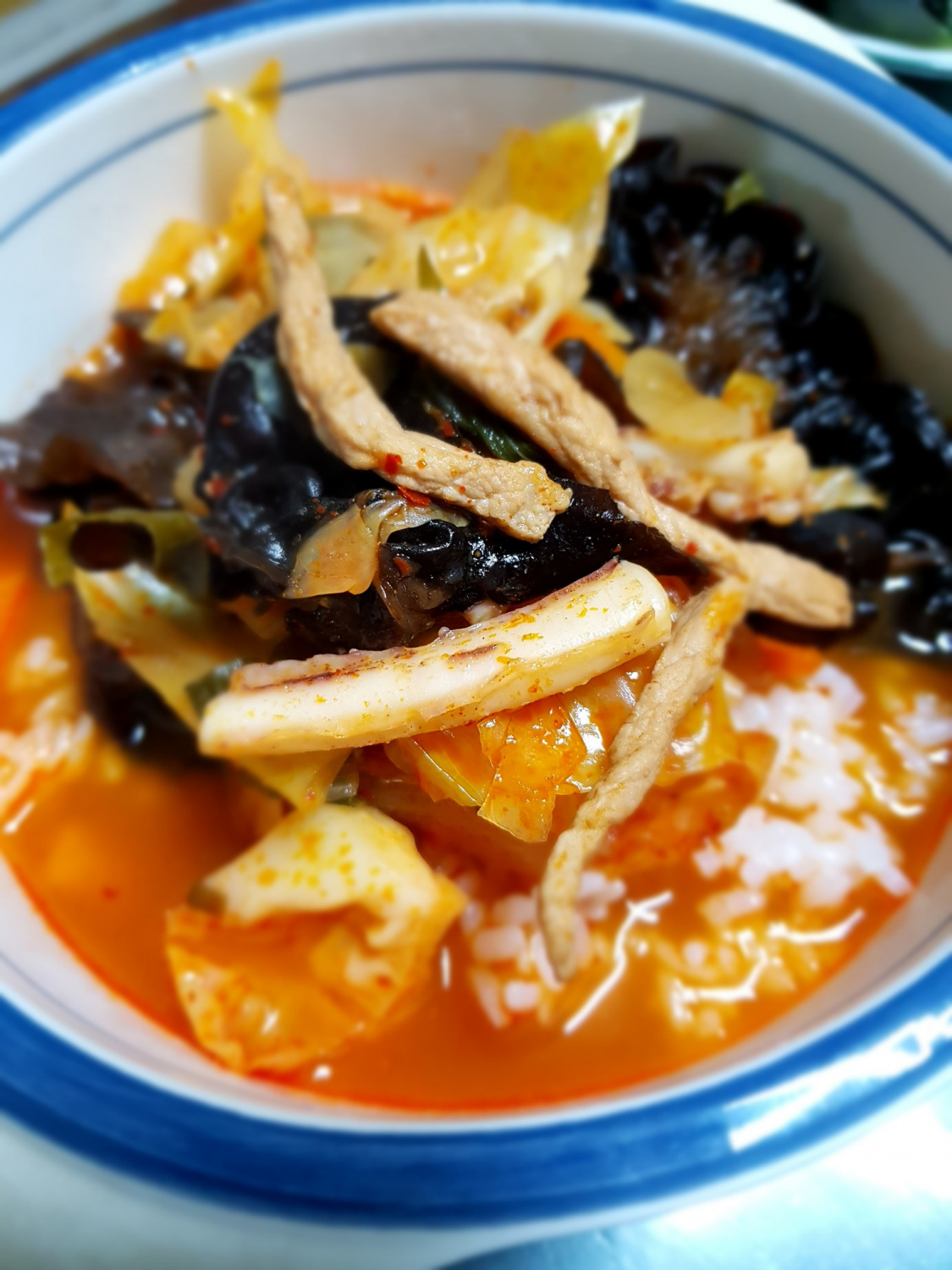Spicy, Savory, and Refreshing Jjamppong
Homemade Jjamppong: A Hearty and Flavorful Noodle Soup!

On a chilly day, nothing beats a warm bowl of Jjamppong! This recipe uses leftover ingredients from the fridge – a mix of vegetables, seafood, and pork – to create a restaurant-quality spicy noodle soup right in your own kitchen. Let’s make a satisfying Jjamppong meal, perfect as Jjamppong-bap (rice with Jjamppong).
Main Ingredients- 200g thinly sliced pork for stir-fry (Japchae-yong)
- 1/2 squid, cleaned and cut into bite-sized pieces
- 10 dried wood ear mushrooms
- 1/3 carrot
- 1 onion
- 1/10 small cabbage
- 1 green onion
Seasonings & Others- 5 Tbsp gochugaru (Korean chili flakes)
- A pinch of black pepper
- 1 Tbsp soy sauce
- Salt to taste
- 1 Tbsp chicken stock (or dashi broth)
- 1 tsp oyster sauce
- Generous amount of cooking oil
- 5 Tbsp gochugaru (Korean chili flakes)
- A pinch of black pepper
- 1 Tbsp soy sauce
- Salt to taste
- 1 Tbsp chicken stock (or dashi broth)
- 1 tsp oyster sauce
- Generous amount of cooking oil
Cooking Instructions
Step 1
First, prepare all the ingredients. Slice the pork and squid into bite-sized pieces. If using dried wood ear mushrooms, soak them in water until softened. Slice the carrot, onion, and cabbage into strips. For the green onion, separate the white and green parts. Finely chop the white part for making scallion oil, and cut the green part into larger pieces for the soup.

Step 2
Heat a generous amount of cooking oil in a deep pot or wok over medium-low heat. Add the chopped white parts of the green onion and slowly cook until fragrant and the oil is infused with onion flavor (scallion oil). Be careful not to burn it.

Step 3
Once the scallion oil is ready, increase the heat to medium-high. Add the thinly sliced pork and stir-fry until it turns white and is cooked through. As soon as the pork changes color, add 1 tablespoon of soy sauce and stir-fry like braising, allowing the soy sauce to coat the pork.

Step 4
Add the carrots, which are harder vegetables, and stir-fry them with the pork. If you desire a deeper red color for your Jjamppong, now is the time to add half of the gochugaru (about 2.5 Tbsp). Stir-fry it to infuse the ingredients with the chili flavor, similar to making chili oil.

Step 5
Now, add the onion, cabbage, and the larger pieces of green onion (for the soup). Stir-fry quickly over medium-high heat until the vegetables are slightly softened but still have a little crunch. Avoid overcooking, as they can become mushy.

Step 6
Add the remaining gochugaru and stir-fry with the vegetables for about 1 minute until fragrant. Then, add 1 tablespoon of chicken stock and 1 teaspoon of oyster sauce, mixing well. Have your water ready to add immediately.

Step 7
Pour in enough water to generously cover the ingredients. For an even richer flavor, you can use anchovy-kelp broth or seafood broth instead of plain water. Once the water comes to a rolling boil, add the rehydrated wood ear mushrooms and the squid (or squid tentacles). Cook until the seafood is just done. Overcooking squid can make it tough.

Step 8
When the soup is boiling vigorously, adjust the seasoning with salt. Taste the broth and add salt gradually to achieve a spicy yet refreshing flavor. A pinch of black pepper can also be added.

Step 9
Serve the delicious Jjamppong in bowls, or pour it generously over a bowl of warm rice for a hearty Jjamppong-bap. On a cold day, this warm and flavorful meal will surely comfort your body and soul. Feel free to add bean sprouts or bok choy for extra freshness.



